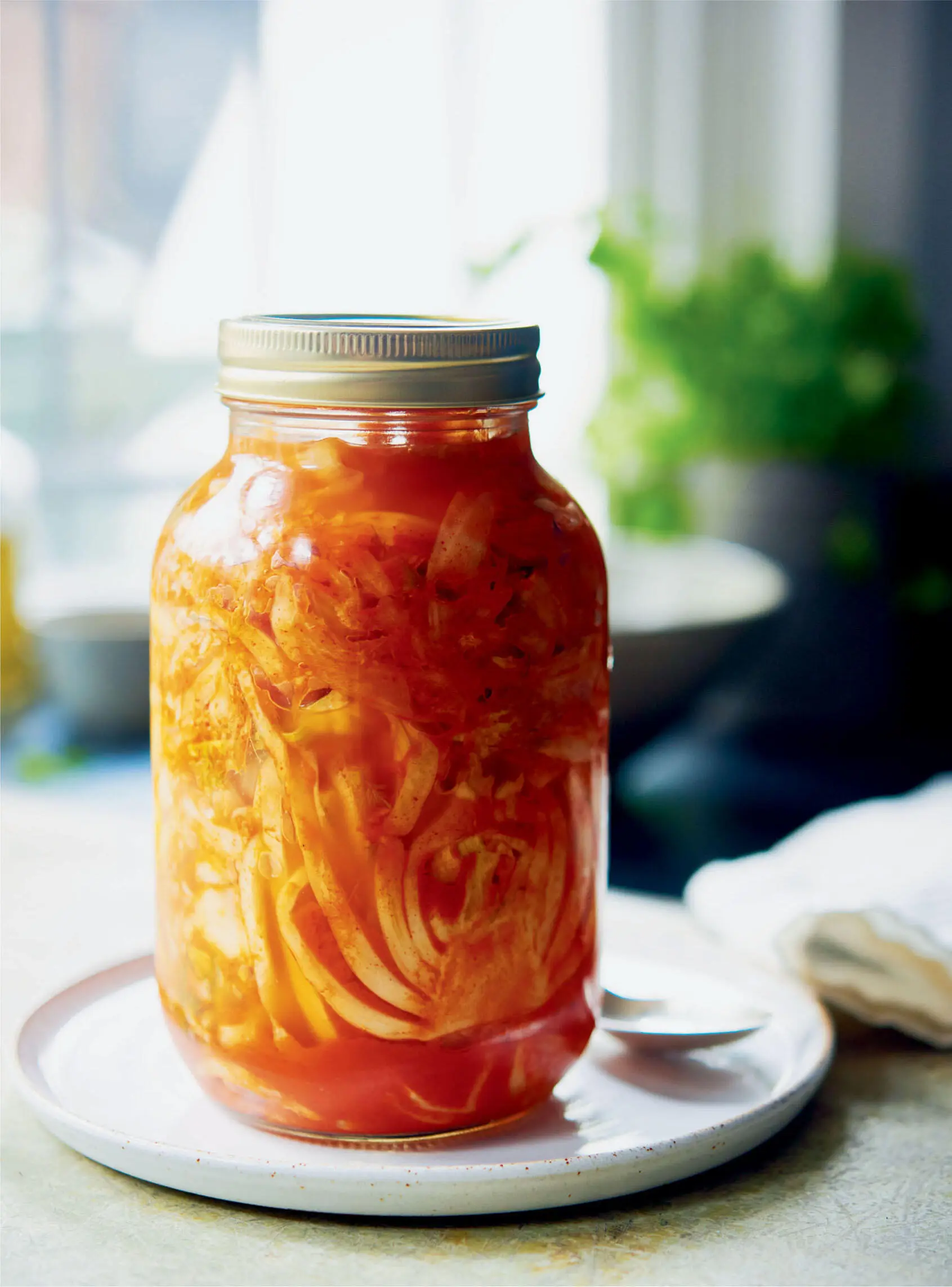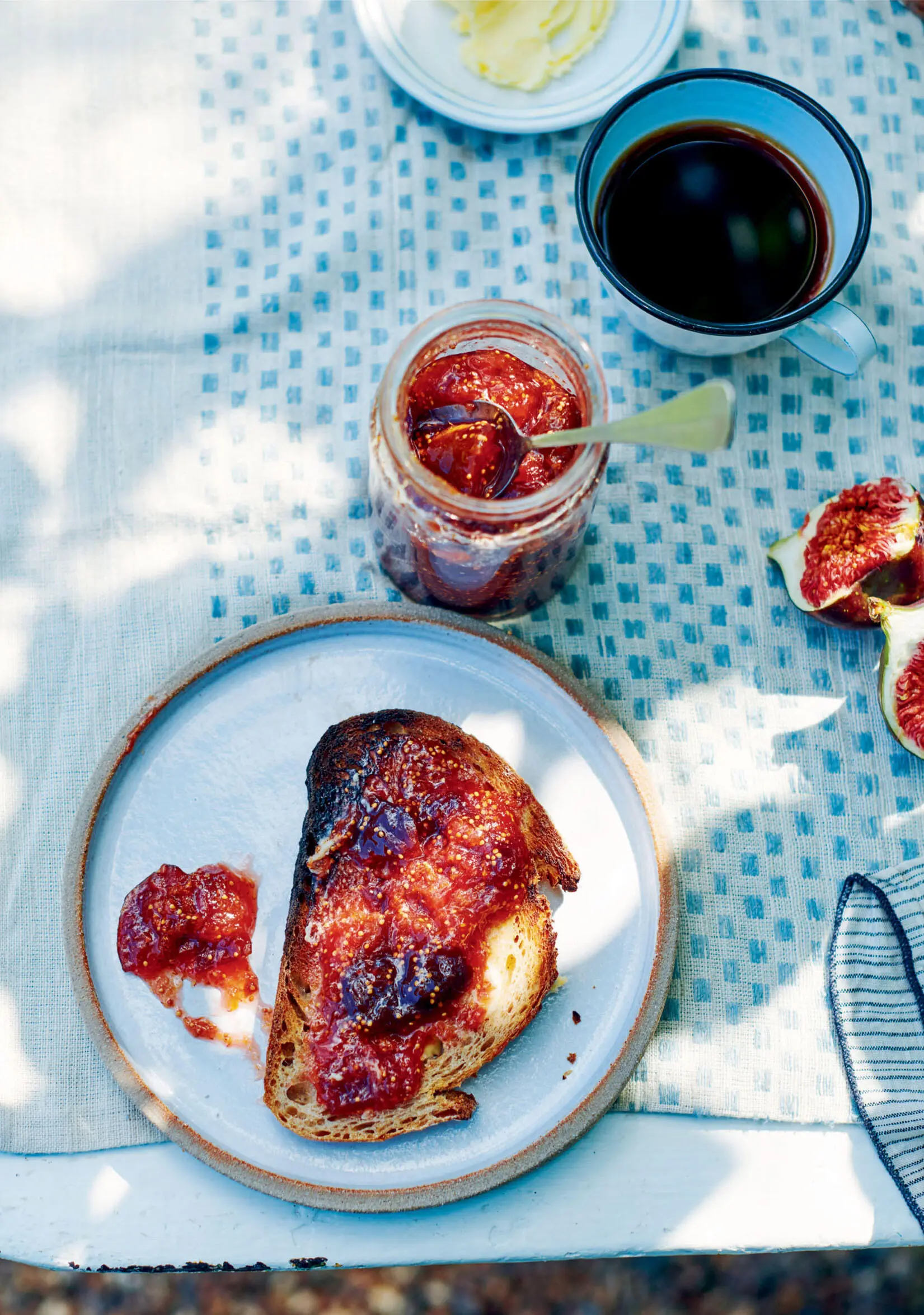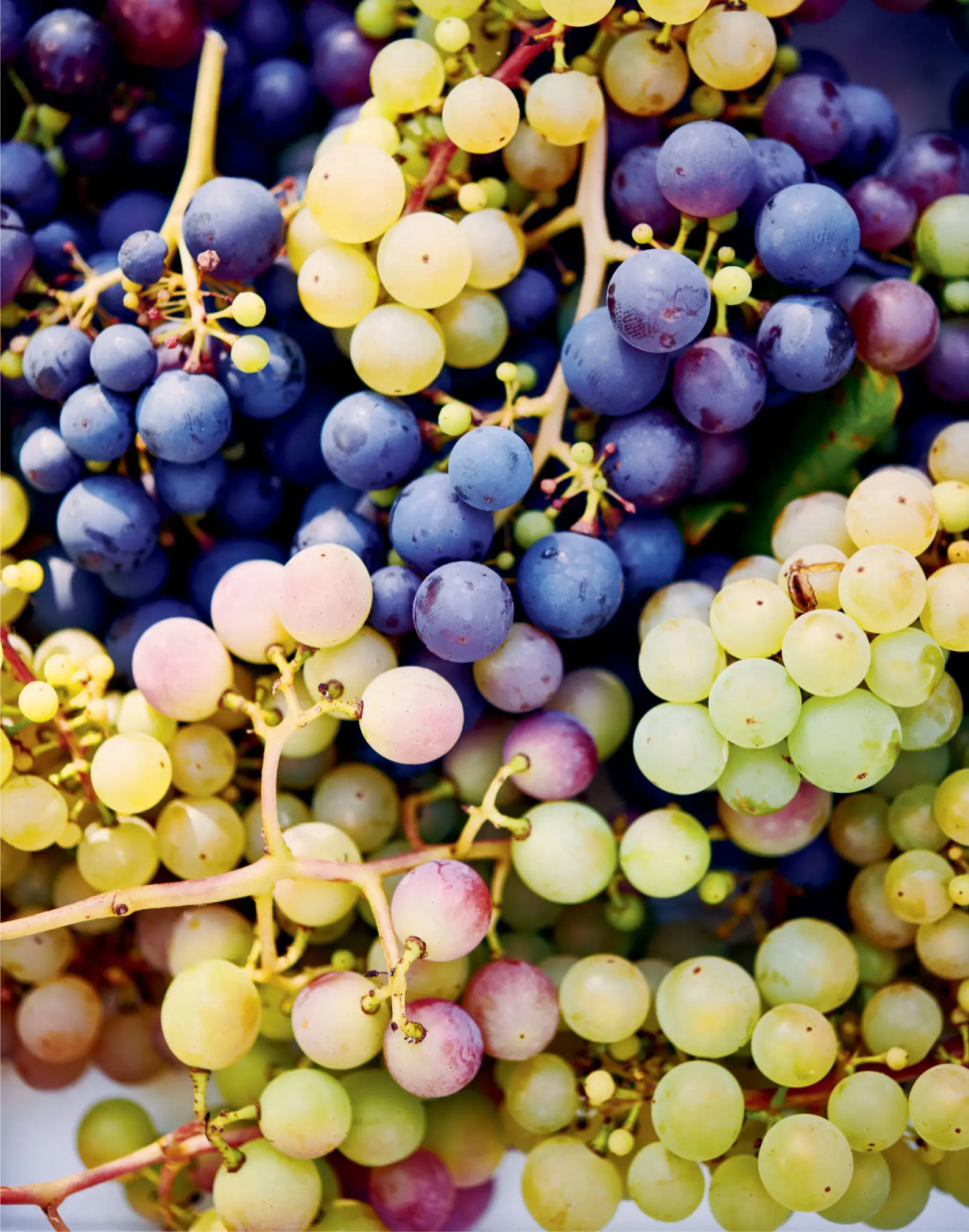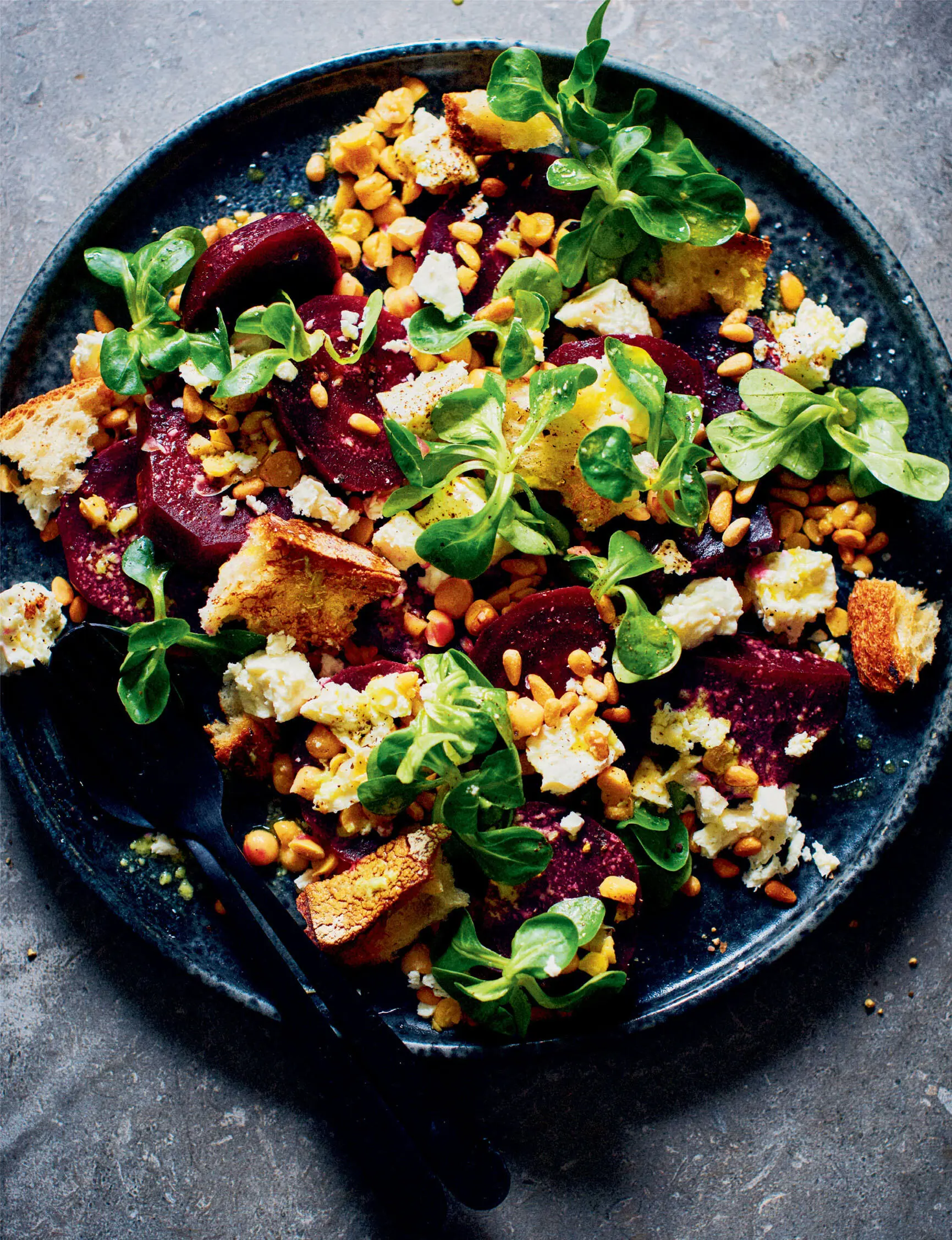
PICKLING
Jars of pickled produce not only look beautiful, they are also a very tasty thing to have on hand all year round. Always ensure what you are pickling has been thoroughly washed and that all the pieces are of an equal size. I recommend a minimum pickling time of 14 days, but up to 1 year will yield flavoursome results. Make sure you evenly distribute the bay leaves and peppercorns, and any other flavourings you use, between the jars. And always ensure the lids are properly sealed, to prevent any spoilage, along with storing the jars in a cool, dark place.
Best for pickling
Cucumber, Beetroot, Cauliflower, Beans, Cabbage, Rhubarb, Carrots
Pickled Cucumbers
MAKES: AROUND 700G | PREPARATION TIME: 10 MINUTES, PLUS CURING AND PICKLING | COOKING TIME: UNDER 5 MINUTES
2 small cucumbers (about 200g each), washed
4 tbsp rock salt
FOR THE PICKLING LIQUOR
250ml white wine vinegar
55g demerara sugar
½ tsp caraway seeds
6 black peppercorns
6 dill sprigs
1 Cut the cucumbers in half widthways, then each half lengthways into four. Put them in a dish, sprinkle them with the rock salt and leave for 2 hours. Wash off the salt and pack into a sterilised jar.
2 Put all ingredients for pickling liquor, apart from the dill, in a medium saucepan and bring to the boil. Simmer for 2 minutes, to dissolve the sugar, then remove from the heat and add the dill.
3 Pour the hot pickling liquor over the cucumbers and seal with a lid. Leave for at least 2 weeks before eating. They will keep for a good few weeks in the fridge once opened.
JAM-MAKING
I have sisters-in-law, brothers-in-law, friends and uncles who all make jam, and everyone makes it completely differently. I wanted to put jams in this book as there is a right way and a wrong way to go about jam-making, and it’s all about balance. A big pot of steaming fruit sends delicious aromas throughout the house and is the perfect way to use up overripe fruit. One of the issues we find we have to tackle as parents is the amount of added sugar in shop-bought products. Making your own preserves allows you to control the levels of sugar you add, and thus the end result on your larder shelf. Obviously, fruit that is sourer will need more sugar, but if you combine a few different ones you can get the best of both worlds.
Best for jam
Stone fruit, Berries, Rhubarb, Figs, Quince
Fig Jam
MAKES: 1.3KG | PREPARATION TIME: 15 MINUTES | COOKING TIME: ABOUT 30 MINUTES
1kg figs, tops of stalks removed, roughly chopped
2 fig leaves, cleaned
500g jam sugar (containing pectin)
1 Put all the ingredients in a large saucepan and stir well to combine. Place over low heat and allow the sugar to dissolve, then increase the heat slightly and bring to a gentle simmer.
2 Once the liquid begins to come out of the figs, turn the heat up a little and stir regularly to prevent the jam catching on the bottom of the pan. Simmer rapidly until the jam reaches 105º. If you don’t have a thermometer, use the saucer test: put a saucer in the freezer, then once it’s cold put half a teaspoon of the jam on the saucer. If it does not run, it’s ready.
3 Remove the fig leaves, scraping the jam off them and back into the pan, and pour the jam into sterilised jars. Cover with the lids immediately. The unopened jars will keep for up to 12 months, and up to 1 month in the fridge once opened.


CHUTNEY MAKING
We always have chutney in my house, whether it’s homemade or shop-bought. It is a staple on cheese sandwiches and a go-to condiment when a little extra flavour is needed.
Best for chutney
Tomatoes, Onions, Stone fruit, Apples, Pears, Rhubarb, Figs
Apple, Rhubarb and Rosemary Chutney
MAKES: 475G | PREPARATION TIME: 15 MINUTES | COOKING TIME: 40 MINUTES
1 onion, cut into 1cm dice
2 apples, peeled, cored and cut into 2cm dice (about 400g)
4 rhubarb stalks, cut into 2cm pieces (about 250g)
4 sprigs of rosemary, tied together with string
150ml white wine vinegar
100g dried, pitted dates, finely chopped
1 Put all the ingredients in a medium saucepan over medium heat. Bring to a simmer and cook gently for 30–40 minutes until sticky and shiny.
2 Remove the rosemary sprigs, pour into sterilised jars and seal. The unopened jars will keep for up to 12 months, and up to 1 month in the fridge once opened.



Weekday meals are some of the toughest to get inspired for. They’re the ones we don’t think about until we get home or call for a takeout. Or we eat something quick and rubbish because we just don’t have time to prep a meal. We’re all working incredibly hard, and we also have to fit in travel, family and down time, so making food can quickly become a chore. These simplified dishes are really easy to make, and they offer great nutritional value, too. Don’t overthink it and don’t worry about it.

Beetroot, Wasabi, Feta and Pine Nut Salad
This dish makes a great summer, or early autumn, meal. It is delicious and also surprisingly filling, with the chickpeas, feta and pine nuts all playing a part. The wasabi is there to season the dish, not to overpower it. So even if you are not a fan, do try it!
SERVES 4 | PREP TIME: 25 MINUTES | COOKING TIME: 1 HOUR
100g pine nuts
500g cooked beetroot
100g tinned chickpeas, drained, rinsed and roughly chopped
100g lamb’s lettuce
200g feta
2 slices of sourdough (about 100g), gently toasted then torn
sea salt and freshly ground black pepper
FOR THE DRESSING
½ tsp wasabi paste
50ml olive oil
1 tbsp rice wine vinegar
1 Preheat the oven to 210°C/190°C fan/gas 7.
2 Place the pine nuts on a baking tray and toast in the oven for 8–10 minutes, shaking halfway through, until a deep golden colour.
3 Slice the beetroot into large chunks and lay them on a platter. Scatter the chopped chickpeas on top, followed by the lamb’s lettuce. Crumble the feta on top, then add the pine nuts and a generous grind of black pepper. Finish with the torn sourdough pieces.
4 For the dressing, whisk everything together in a bowl, season with salt, then drizzle over the top of the salad. Serve immediately.

Field Mushroom, Walnut and Thyme Filo Pie
Читать дальше




















